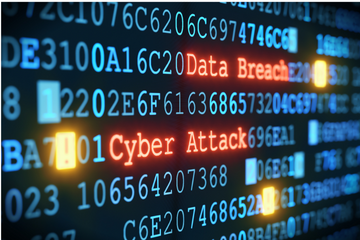The attack was a Distributed Denial of Service (DDoS) attack causing their internet to be intermittent as well as affecting the use of VLE and VPN. In this instance, the universities only reported a few hours of disrupted services. This group of cyber criminals appear to be a subgroup of the pro-Russian threat actor group Killnet, and focuses on DDoS attacks.
Further information can be read here: UK universities left scrambling in wake of cyber attacks
It is known that often educational institutions can be 'easy' targets for cyber criminals. The DfE Cyber Security Standards for Schools and Colleges gives guidance about how to create a more robust and secure environment.
As part of our data protection service to schools we offer an Information/Cyber Security Best Practice Area, Checklists, Training and Awareness and guidance.
Types of Cyber Attacks: DDoS Attacks

What to do in the event of a Cyber Attack
Tell someone! Report to IT. Report to SLT.Unplug the computer from the internet by removing the ethernet cable or turning the Wi-Fi off. Isolate the infected device and pass to IT
If you are a victim of a ransomware attack we would recommend reporting this to:
Action Fraud: https://www.actionfraud.police.uk/ as well as your data protection officer so they can advise about the data loss or your local police and ask for the cyber crime team or phone 101 and ask for the cyber crime team.
Most cyber crimes like these will also need to be reported to the ICO by your data protection officer. Our customers should email
These incidents should also be reported to the DfE sector cyber team at
Academy trusts have to report these attacks to ESFA.
Where the incident causes long term school closure, the closure of more than 1 school or serious financial damage, you should also inform the National Cyber Security Centre.
Always ensure there are backups you can restore from. Preserving evidence is as important as recovering from the crime.
Forward suspicious emails to

